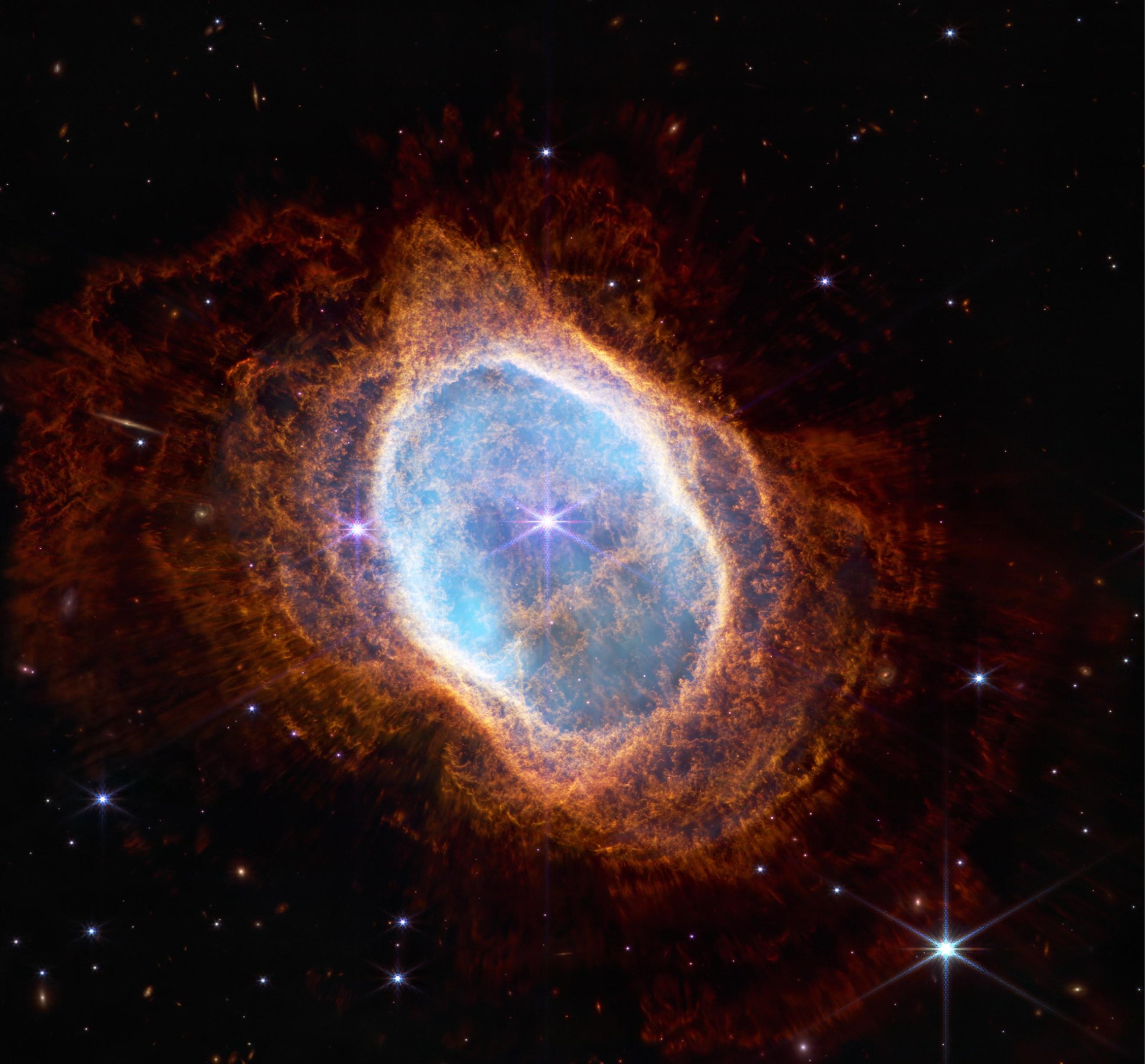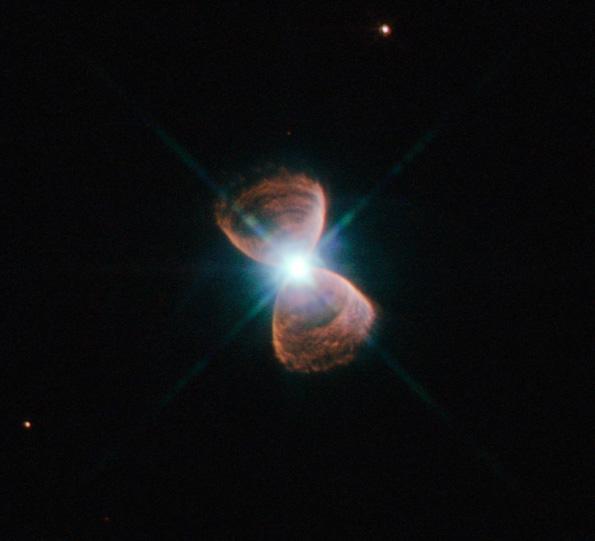The Southern Ring Nebula, also known as Eta Carinae, is an interstellar nebula located in the constellation of Carina, approximately 7,500 light-years from Earth. It is one of the most luminous and largest known objects in the Milky Way, with a diameter of about 10,000 light-years.
The Eta Carinae nebula is primarily composed of interstellar gas and dust and is surrounded by an enormous cloud of gas and dust, known as the Southern Ring Nebula. The nebula has a ring-like appearance because it was shaped by explosions from a giant star that occurred around 4,000 years ago.
The giant star at the heart of Eta Carinae is also called Eta Carinae, which is about 100 times more massive than the Sun and approximately 4 million times more luminous. It is so bright that it can be seen with the naked eye, even at such a vast distance from Earth. Eta Carinae is a binary star system, meaning it consists of two stars orbiting each other. The primary star is Eta Carinae, while the secondary star is smaller and cooler.
Eta Carinae is known for being an unstable and explosive star, which may undergo explosive episodes approximately every 100 years. During these outbursts, the star releases enormous amounts of energy, which can alter the shape of the surrounding nebula. The most recent explosions of Eta Carinae occurred in the 19th century and were observed by astronomers worldwide.
The Southern Ring Nebula is a fascinating object for astronomers because it helps us better understand how giant stars evolve and how they impact the surrounding interstellar medium. Additionally, it is a beautiful object to observe, with its bright ring-like appearance in the night sky. The nebula can be seen with small telescopes, but it is best observed with larger telescopes or through images captured by satellites or ground-based telescopes.

/i.s3.glbimg.com/v1/AUTH_da025474c0c44edd99332dddb09cabe8/internal_photos/bs/2022/v/I/HB3hmiSCy80fHVw9PVhQ/99834267-this-image-released-by-nasa-on-july-12-2022-is-a-composit-of-the-information-captured-by-th.jpg)





No comments:
Post a Comment